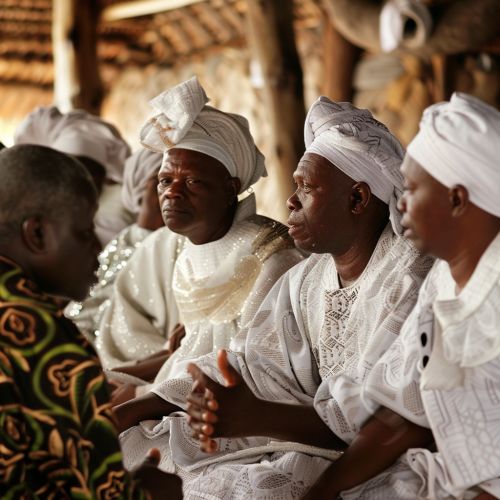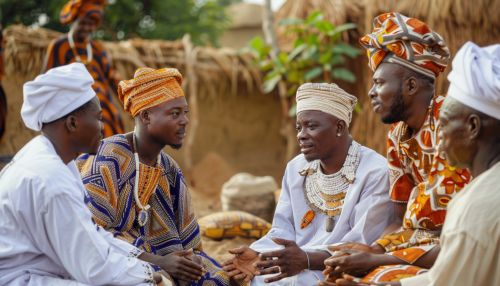Yoruba language
Introduction
The Yoruba language is a Niger-Congo language spoken predominantly in southwestern Nigeria and parts of Benin and Togo. It is the native language of the Yoruba people, one of the largest ethnic groups in Africa. Yoruba is a tonal language with a rich linguistic heritage, comprising a complex system of phonology, morphology, syntax, and semantics. This article delves into the intricate details of the Yoruba language, exploring its historical development, phonetic structure, grammatical rules, and sociolinguistic aspects.
Historical Development
The Yoruba language has a long and storied history, tracing its roots back to the ancient Yoruba civilization. The earliest written records of Yoruba date back to the 19th century, with the advent of Christian missionaries who transcribed the language using the Latin alphabet. The development of Yoruba orthography was significantly influenced by Samuel Ajayi Crowther, a Yoruba clergyman and the first African bishop in the Anglican Church, who published the first Yoruba Bible in 1850.
Phonology
Yoruba phonology is characterized by its tonal nature, with three primary tones: high, mid, and low. These tones are phonemic, meaning they can change the meaning of a word. For example, the word "bàtà" (shoe) differs in meaning from "bàtá" (drum) solely based on tone.
Consonants
Yoruba has a relatively simple consonant inventory, consisting of 18 consonants. These include plosives, nasals, fricatives, and approximants. Notably, Yoruba lacks the voiceless bilabial plosive /p/, which is uncommon among world languages.
Vowels
The Yoruba vowel system comprises seven oral vowels and five nasalized vowels. The oral vowels are [i, e, ɛ, a, ɔ, o, u], while the nasalized vowels are [ĩ, ẽ, ã, õ, ũ]. Vowel harmony is a key feature in Yoruba, where vowels within a word harmonize to be either all oral or all nasal.


Morphology
Yoruba morphology is predominantly agglutinative, meaning that words are formed by stringing together morphemes, each carrying a specific meaning. This section explores the structure of Yoruba words, including nouns, verbs, adjectives, and pronouns.
Nouns
Yoruba nouns do not inflect for gender or number. Instead, plurality is indicated by context or through the use of quantifiers. For example, "ọmọ" (child) can be made plural by adding "awọn" (some), resulting in "awọn ọmọ" (children).
Verbs
Yoruba verbs are marked for tense, aspect, and mood through the use of prefixes and particles. The language employs a system of serial verb constructions, where multiple verbs are used in sequence to convey complex actions or events.
Adjectives
Adjectives in Yoruba typically follow the nouns they modify. They do not inflect for gender, number, or case. Comparative and superlative forms are expressed using adverbs or additional descriptive phrases.
Syntax
The syntax of Yoruba follows a Subject-Verb-Object (SVO) word order. However, the language allows for flexibility in sentence structure, particularly in the use of topicalization and focus constructions.
Sentence Structure
Yoruba sentences often begin with the subject, followed by the verb and the object. For example, "Mo ra iwe" translates to "I bought a book." However, emphasis can be placed on different parts of the sentence through topicalization, where the focused element is moved to the beginning of the sentence.
Questions
Questions in Yoruba are formed by adding question particles or by using intonation. For example, the particle "nko" can be added to the end of a statement to form a question: "O wa nko?" (Is he/she coming?).
Semantics
Yoruba semantics is rich and nuanced, with meanings often derived from context, tone, and cultural references. This section explores the semantic features of Yoruba, including idiomatic expressions, proverbs, and metaphors.
Idiomatic Expressions
Yoruba is known for its extensive use of idiomatic expressions, which often carry cultural and historical significance. For example, "A kii fi ete sile pa lapalapa" translates to "One does not leave leprosy untreated to treat ringworm," meaning one should prioritize more serious issues over trivial ones.
Proverbs
Proverbs play a significant role in Yoruba communication, often used to convey wisdom, advice, or moral lessons. An example is "Bi o ba tori eni ba ni, o tori ara re ni," meaning "If you do something for someone, you do it for yourself," emphasizing the importance of mutual aid and community.
Sociolinguistic Aspects
Yoruba is not only a means of communication but also a marker of identity and cultural heritage. This section examines the sociolinguistic aspects of Yoruba, including its dialectal variations, language use in different contexts, and its role in education and media.
Dialects
Yoruba has several dialects, which can be broadly categorized into three main groups: Northwest Yoruba, Central Yoruba, and Southeast Yoruba. Each dialect group has its own phonological and lexical features, though mutual intelligibility is generally maintained.
Language Use
Yoruba is used in various social contexts, from informal conversations to formal ceremonies. It is the primary language of communication in many Yoruba-speaking communities and is also used in religious practices, traditional music, and oral literature.
Education and Media
Yoruba is taught in schools in southwestern Nigeria and is used as a medium of instruction in some primary schools. The language also has a presence in media, with Yoruba-language newspapers, radio stations, and television programs contributing to its preservation and promotion.
